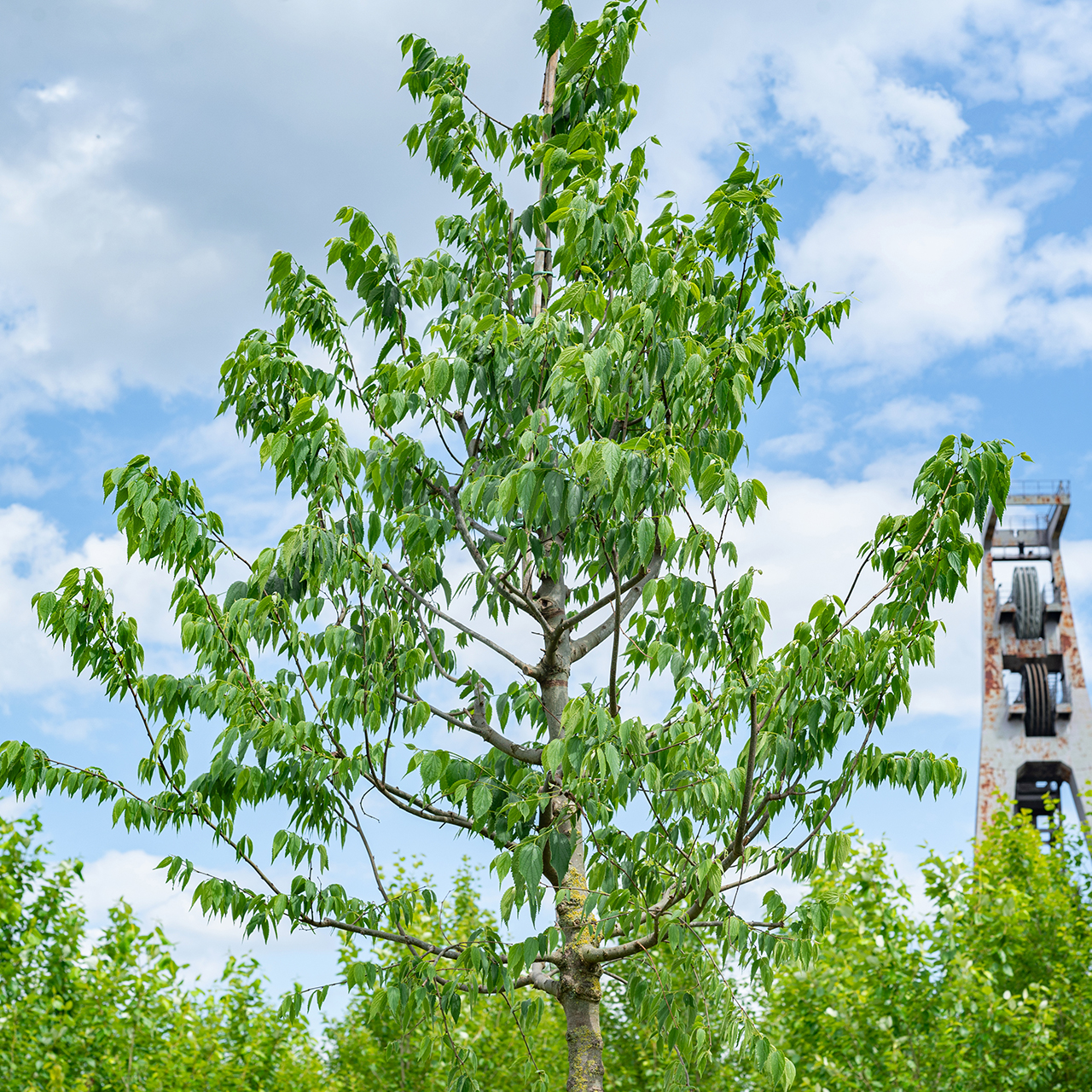European nettle tree
The European nettle tree is ideal for planting in city centres. It tolerates heat and drought and is pretty undemanding as regards the type of soil it needs: It thrives on any soils – from acidic to slightly alkaline conditions. From September, it bears fruit that is traditionally used in South Tyrol to make desserts, for example.
European nettle tree (Celtis australis)
| Family: | Cannabaceae – Hemp |
| Distribution: | Southern Europe/Mediterranean region, Turkey, Caucasus, as far as Nepal, Madeira |
| Size: | Max. 15–25 metres in height and 8–10 metres in breadth |
| Life: | Up to 300 years |
| Requirements: | Sunny and warm location; it is heat- and drought-tolerant, but still sensitive to frost when young |
| Soil: | Deep, moderately moist locations |
| Benefits: | Picturesque stature, edible fruit, hard, elastic wood for the manufacture of musical instruments, wagon wheels, oars and fishing rods |
On strong shoulders
The RAG-Stiftung was created from the former RAG-Beteiligungsgesellschaft with its profitable subsidiaries in the fields of mining technology, power generation, real estate and chemicals. At its inception in 2007, the RAG-Stiftung’s assets in these holdings totalled around EUR 6.4 billion euros. That figure had grown to EUR 17.6 billion by the end of 2023. Ensuring long term that the foundation can accomplish its mission requires broad risk diversification for its assets. These now comprise the strategic holdings Evonik Industries AG, Vivawest GmbH and RSBG SE and broadly spread, global capital investments in shares, bonds, funds, SMEs and real estate. However, the RAG-Stiftung’s strategic holdings also include RAG Aktiengesellschaft, a wholly-owned subsidiary that is responsible for the operational management of the post-mining activities.
Together with all of its investments, the RAG-Stiftung contributes to achievement of the United Nations’ Sustainable Development Goals. The foundation makes particularly key contributions to ensuring clean water, biodiversity on land, sustainable cities and communities, innovation and a functioning industrial infrastructure.
Occasion for planting
The RAG-Stiftung conducted a comprehensive stocktake of its value contributions to the United Nations’ Sustainable Development Goals in 2023. As part of that, it leveraged its extensive knowledge in all of its strategic holdings. Following a cross-company dialogue staged on 28 September 2023 with the goal of sharing experience and expertise, this knowledge was directly incorporated into further development of the RAG-Stiftung’s sustainability management work. The RAG-Stiftung planted this tree to thank all participants for their valuable input and stimuli that day.
